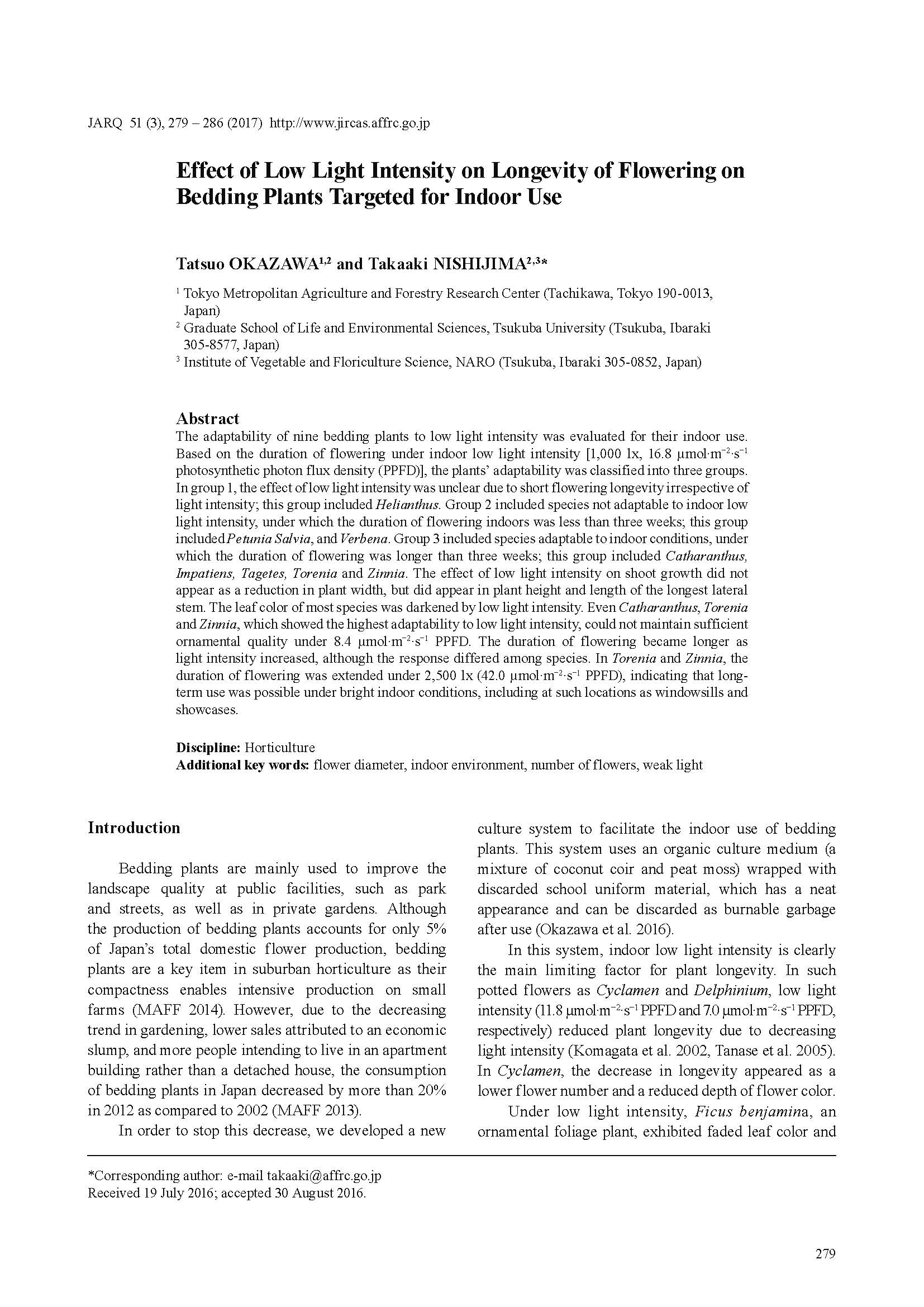Effect of Low Light Intensity on Longevity of Flowering on Bedding Plants Targeted for Indoor Use
| ISSN | 00213551 |
|---|---|
| NII recode ID (NCID) | AA0068709X |

The adaptability of nine bedding plants to low light intensity was evaluated for their indoor use. Based on the duration of flowering under indoor low light intensity [1,000 lx, 16.8 μmol・m-2・s-1 photosynthetic photon flux density (PPFD)], the plants’ adaptability was classified into three groups. In group 1, the effect of low light intensity was unclear due to short flowering longevity irrespective of light intensity; this group included Helianthus. Group 2 included species not adaptable to indoor low light intensity, under which the duration of flowering indoors was less than three weeks; this group included Petunia Salvia, and Verbena. Group 3 included species adaptable to indoor conditions, under which the duration of flowering was longer than three weeks; this group included Catharanthus, Impatiens, Tagetes, Torenia and Zinnia. The effect of low light intensity on shoot growth did not appear as a reduction in plant width, but did appear in plant height and length of the longest lateral stem. The leaf color of most species was darkened by low light intensity. Even Catharanthus, Torenia and Zinnia, which showed the highest adaptability to low light intensity, could not maintain sufficient ornamental quality under 8.4 μmol・m-2・s-1 PPFD. The duration of flowering became longer as light intensity increased, although the response differed among species. In Torenia and Zinnia, the duration of flowering was extended under 2,500 lx (42.0 μmol・m-2・s-1 PPFD), indicating that longterm use was possible under bright indoor conditions, including at such locations as windowsills and showcases.
| Date of issued | |
|---|---|
| Creator | Tatsuo OKAZAWA Takaaki NISHIJIMA |
| Subject |
flower diameter indoor environment number of flowers weak light |
| Publisher | Japan International Research Center for Agricultural Sciences |
| Available Online | |
| NII resource type vocabulary | Journal Article |
| Volume | 51 |
| Issue | 3 |
| spage | 279 |
| epage | 286 |
| DOI | 10.6090/jarq.51.279 |
| Rights | Japan International Research Center for Agricultural Sciences |
| Relation | : J-STAGE |
| Language | eng |
